Has the earth's atmosphere always remained the same?
Like everything else on earth, the atmosphere has changed a lot compared to the earth;s early atmosphere. When the earth was first formed, 4500 million years ago, the atmosphere was made up mainly of hydrogen and carbon dioxide. Since Hydrogen is very light, most of it spread out in space and the carbon dioxide became locked up in rocks.
Once plants appeared on earth, perhaps 2.7 million years ago, they began to remake the atmosphere. The air now contained oxygen too, and ever since then, life and earth's atmosphere have waltzed together. However for the last billion years the atmosphere has remained pretty constant.
What is atmospheric Pressure?
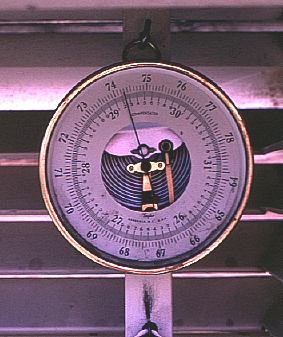
If you take an empty bottle, close it, weigh it, pump out the air in it, and weigh it again, you will find that the bottle weighs less than before. This proves that though you cannot see or feel air, air has weight.
Atmospheric pressure is the force exerted on you by the weight of tiny particles of air molecules. Although Air molecules are invisible, they still have weight and take up space. Since there's a lot of empty space between air molecules, air space between air molecules, air can be compressed to fit in a smaller volume. When its compressed air is said to be 'under high pressure'.
Air at sea level is what we're used to - in fact we're so used to it that we forget we're actually feeling air pressure all the time!
Did you know that the earth's atmosphere is pressing against earth square inch of you with a force of 1 kilogramme per square centimetre? It is because you have air inside your body too, that air balances out the pressure outside, so you stay nice and firm and are not squashed!
If you've ever been to the top of a tall mountain, you may have noticed that your ears pop and you need to breathe more often that when you're at sea level.
This is because the air gets thinner as you go higher, and as the number of molecules of air around you decreases, the air pressure decreases.
Weather forcasters measure air pressure with a barometer.

Weather forcaster measure air pressure with a barometer. It was an intalian scientist called Torricelli who designed an apparatus on which the barometer is based. Barometers are used to measure the current air pressure at a particular location in 'inches of mercury' or in 'millibars'. A measurement of 29.92 inches of mercury is equivalent to 1013.25 millibars.
Air pressure can tell us about what kind of weather to expect as well. If a high pressure system is on its way, oftern you can expect clear skies. If a low pressure system is coming, then expect storms and rain!
Why is the troposphere different?
The troposphere is the layer of atmosphere that is closest to the earth's surface. It extends only about 10 kms above the surface of the earth, and so takes up only 1.5% of the total space in the atmosphere. However, the other layers lying on top of the troposphere make it so dense that it contains over 80% of the atmosphere's total mass!'
What are the layers of the atmosphere?

The atmosphere is divided into five layers. It is thickest near the surface, and thins out with height unti it eventually merges with space.

The troposphere is the first layer above the surface and contains half of the earth's atmosphere. It is the densest part of the atmosphere, and there is maximum amount of water vapour and varbon dioxide in this layer. It is heated by the ground and is responsible for the weather.

The stratosphere is less dense than the troposphere. It extends from 10 to 40 kms above the earth's surface. It contains almost the same gases but there is much less water vapour here.
The stratosphere contains a layer of ozone, which absorbs most of the harmful rays of the sun. Many jet aircrafts fly in this stratosphere because it is very stable.
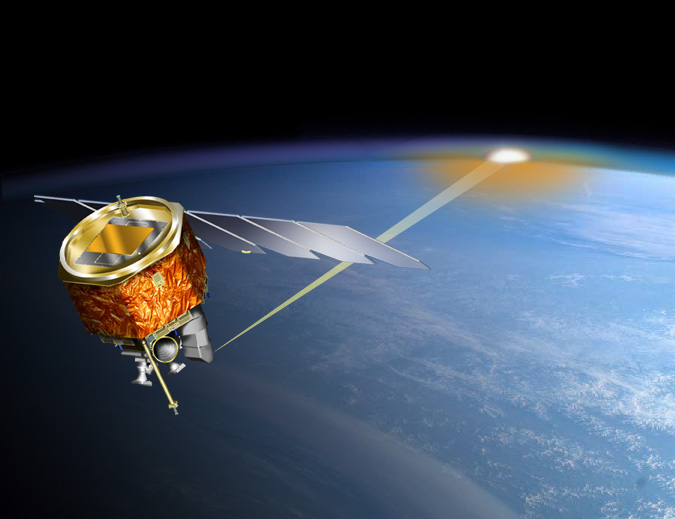
The Mesosphere is the next layer. It extends between 40 and 70 kims above the earth's surface. The gases are even less dense here, and there is almost no carbon dioxide or water vapour. It is important in that meteors burn up on their way to the surface in the mesosphere.

The fourth layer is the thermosphere. It extends about 400 kms into space. Its thin gases trap radiation from the sun, making it extremely hot.
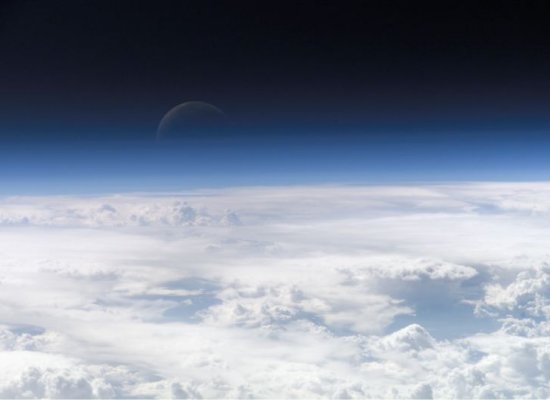
The atmosphere merges into space extremely thin fifth layer - the exophere. This is the upper limit of our atmosphere. beyond it, is the emptiness of space.
What is Ozone?

Oxygen exits in the form of molecules and each molecules of oxygen contains two atoms of oxygen. There is however, another form of oxygen called ozone, which is made up of three oxygen atoms.
Most ozone is formed in the upper layers of the atmosphere, by the sun. The radiation breaks up the oxygen molecules into seperated atoms. When these single atoms become attached to another oxygen molecule, an ozone molecule is formed. Ozone can also be formed when lightning splits up oxygen molecules.
Ozone is found in layer about 19 to 35 kms above the earth. This is called the Ozone Layer. It is very important to us because it filters and protects us from the sun's ultraviolet radiation. Since it kills germs, it is used to purify water, and as a cleansing agent.
Though the effects of ozone in the upper atmosphere are essential to the survival of life on earth, if there is too much ozone near the surface, it can be harmful to plants and animals. Breathing in too much ozone can harm the tissue of our lungs.
What is an ozone hole?

Small amount of ozone are constantly being made in the stratosphere by the action of sunlight and oxygen. At the same timen, ozone is being broken down by natural processes.
The Ozone - destroying reactions take place most rapidly only under certain conditions in the stratosphere. These conditions - extreme cold, darkness and isolation, followed by exposure to light - occur over the polar regions after the long polar regions after the long polar winter has finished and the first spring sun appears.
Antarctica is the worst affected area, probably because the air above it is most isolated from the rest of the atmosphere. Scientists often refer to the part of the atmosphere where ozone is most depleted as the 'ozone hole', but it is not really a hole - just a vast region of the upper atmosphere where there is less ozone than elsewhere
The total amount of ozone usually stays constant, because its formation and destruction occur at about the same rate. Human activity has recently changed that natural balance. Certain manufactured substance can destroy stratospheric ozone much faster than it is formed.
We know that it is the ozone layer that protects us from the sun's ultraviolet radiation. Even a 1 percent reduction in the amount of ozone in the upper atmosphere causes a measurable increase in the ultraviolet radiation that reaches the earth's surface. If the ozone layer is destroyed, the amount of ultraviolet radiation reaching us would be catastrophically high, and all living things would suffer radiation burns. So it is very important to prevent too much ozone from being destroyed and ozone holes from forming.
STAR FACTS
Amazing Antarctica
Antarctica is the coldest place on earth. Its freezing air tents to be extremely dry because very cold air holds a small amount of water vapour.
What is Weather?

Weather is an important part of our lives, and one that we cannot control. Instead, the weather often controls how and where we live, what we do, what we wear and what we eat. So what is exactly Weather?
Weather is the day - to - day conditions of the air in a particular place. It can change from day to day. For example, it might have been sunny yesterday, but today may be a rainy day. On some days it can be windy on other days the weather can be hot and humid.
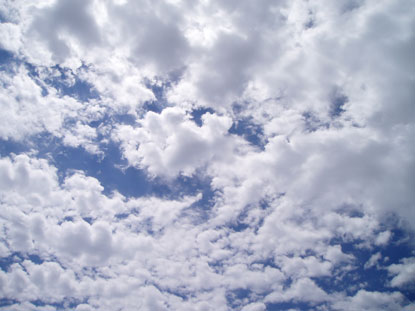
People sometimes mix up climate and weather but the two are quite different. The climate is the common, average weather conditions at a particular place over a long period. There are many different types of climates around the world. Deserts have a hot and dry climate while the Antarctic has a very cold and dry climate.
How does the weather start?
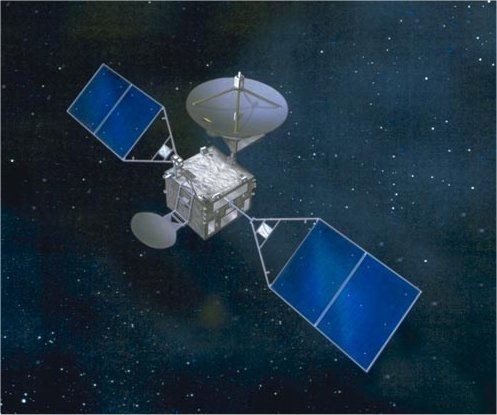
The weather starts in the atmosphere. In cold regions, the cold air is heavier than warm air, so it sinks to the ground. As it sinks, it starts spinning and moving across the earth as wind. When it reaches warmer regions, it is sucked up again as warm air rises up. Air rising from the warm regions goes back to the polar regions, where it becomes cold, and sinks to the earth once again.
So we can say that differences in temperature on different parts of the earth set in motion a restless movement of air in great swirling, churning currents. It is this movement that is responsible for the weather.
How do we forcast the weather?

Weather forcasting is a prediction of what the weather will be like in an hour, tomorrow or next weak. Modern forcasting involves technology, science and advanced math to accurately predict the weather.
The first step in weather forcasting is to get information about the weather, or weather data. Data is collected from the atmosphere from launching balloons twice a day all around the world. Weather balloons records data such as temperature, pressure, humidity and wind speed at different heights in the atmosphere
Another useful tool for forcasters is satellite technology. Satellites allow meteorologists to see what the earth and clouds look like from space. This way, forcaster can see how the atmosphere is behaving.

The date from the weather balloon and satellites is put onto maps by computers. These computers can make forcasts based on certain conditions, and mark them on weather maps. Meteorologists read the weather maps, and by interpreting the data that appears on them, they are able to make a forcast.
What are the three ingredients of weather?
The sun, wind and water are the three main ingredeints of weather. The sun warms the earth and supplies the energy that drives the winds.
The sun's energy is absorbed much of it back as heat. The sun also causes evaporation of water into the air to form clouds, which brings us rain.
Wind blowing from the sea to the land can cool it and bring land to the sea will make the weather dry.
Water also plays a vital part in our weather. Water from our rivers, seas and lakes evaporates and turns into water vapour. Warm water vapour rises and as it turns colder in the higher level of the atmosphere it condenses and falls back to earth as rain or snow. The rain and melted snow flows into the rivers, lakes and seas, completing the water cycle.
What is Meteorology?

Meteorology is the science that studies atmospheric phenomena, especially those that relate to weather.
Meteorolgists are scientists who forcast the weather. They rely on thousands of weather stations located around the wolrd, both on land and at sea. At each station, measurements are taken of such things as air pressure and temperature, wind speed, cloud cover and precipitation. Elsewhere, upper-level observation are made by weather balloons and satellites, which send a continuous flow of photographs back to the earth.
All of this information is sent to national weather centres where it is plotted on charts and analyzed by meteorologists. This information, called a forecast is then sent to the public by newspapers, radio and televion.
Man has always been dependent on the weather, whether it is for farming, industry, fishing flying, shipping or many other activities. So we can say that meteorologists play a very important role in our lives.